A garage or sufficient space for full-sized folding kayaks cannot always be guaranteed thus making folding kayaks the ultimate solution. Folding kayaks is great when it comes to space as such folding kayaks are not much of a problem if you need to fold them and make them relatively small.
You can also carry some folding models on your back and then travel to your waterway by bus.
Some folding kayaks and products resemble folding kayaks and it might be challenging to decide which product is more suitable for your needs. While some out there can be a little pricey, this is one of the best means of carrying along your folding kayaks whenever you go on holiday and also transporting it without the need for roof bars.
The folding kayaks highlighted in this article are not only very compact, but they are also bestselling for their great in-water performance and all-around usability. This article will give you more information on the top current and available folding kayaks around today.
What Is A Folding Kayak?
A folding kayak is defined as one that can be folded in a simplified manner. ROTFLMAO Well done Sherlock – I know, I know.
Okay, time for something less obvious, then:
Traditional folding kayaks can be stood on end and originally reduced by about two-thirds which makes them what I would call the ‘suitcase kayak’. Consequently, there are possibilities for avoiding typically inherent to full-sized kayaks – peculiar to certain pertains to the meaning of storage discrimination, transportation etc.
Information regarding the history of kayaks reveals that the folding kayak had earned its place amongst the older models of the kayak. Yes, my friend, you have read it well. These are legends in the game, and their respective brand reflect this.
Traditional foldable ‘yaks go as far back as one could imagine the sport of kayaking which originally was crafted by nomad hunter-gatherers who took their boats apart easily and then carried them from place to place.
Fast forward a hundred years, and the evolution in manufacturing technology in folding kayaks has advanced to a point where they are designed for almost every type of activity as a recreational activity – from leisure paddling to serious touring. And yet, they remain lightweight and portable, thus being easy to bring around from place to place.
In my opinion, portable folding kayaks are truly the ultimate tool that any real adventurer would use.
How To Choose A Folding Kayak?
But that is where the complication begins and therefore it is advisable to find the right ‘yak but little did you know that with all those factors in mind beginning ‘yak can be a little overwhelming.
Well, that’s why I’m here – to help you choose the right one and maybe guide you with a couple of tips in between – Oh yeah, I’ve gone as far as to give my reviews on the best folding kayaks available today.
Types Of Folding Kayaks
In generic, we can speak of two types of folding kayaks:
- Inflatable kayaks
- Origami kayaks
One might also assume that a folding kayak is always an inflatable kayak. Even though what the above details show is that a foldable kayak is one kind of the two kinds of collapsible type, a folding kayak is not inflated.
There isn’t all that much difference in folding down your ‘yak; however, these two are very different from each other in terms of mechanisms.
So let’s break them down a little further and find out if there are any benefits and drawbacks of anything that we can note from them.
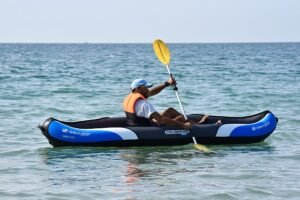
Inflatable Kayak
An inflatable kayak is filled with air and as you can expect, it usually has several chambers that are inflated for extra safety. It can be inflated using a pump; the foot pump, hand pump or the services of an electric pump if you prefer it so. Once discharged, you can also fold it and pack it in a carry bag that is exercised with it at times.
The inflate-deflate mechanism can be immediately linked to the general concept and philosophy of compactness and transportability – even though this function is not completely in the category of ‘folding.
Curious how the inflatables work?
Furthermore, inflatable kayaks tend to cost less than the Origami ones With the same token, the following statements are true.
It can sometimes take a long time to drain an inflatable ‘yak because of the fabric as creases hold lots of water. That also makes them heavier – and marginally less convenient to carry than the other kind.
Origami Kayak
That said, are you prepared to complete an Origami course?
Thankfully, performing this operation is not as complicated as with the paper kayaks, especially those in 2D. These ‘yaks are made of material that folds against itself and this bears repetition because it is done in the simplest of ways.
Some might argue that the folding and unfolding action is a bit of a pain in the behind – but the truth is the oh-so-boring expression:
Practice makes perfect.
After you see how it kind of works and you’re doing it for the second or third time, you’ll transfer from what I call the suitcase to the full-size kayak in just a matter of minutes.
But yes, a pump would do it for you with an inflatable kayak as would any other interaction you wish to engage in for a vacation or leisure activity. However, am I alone in finding DIY always seems so much better?
Here, you can check out the folding and unfolding of an Origami kayak:
The Origami-style kayaks would be of canvas that forms a skin of nyloned fiber over an aluminium or wood framework. To that regard, it is important to note that most of these ‘yaks are frameless – a fact that can be attributable to geometrical folding, which provides rigidity to the structure.
But, interestingly, the origami kayaks seem to triumph in consideration of size. They will usually collapse to tinier dimensions than inflatable ones – and you will not be required to have the pump with you at all times either.
Furthermore, If you have seen the traditional inflatables, most of them come in a bag, but the so-called Origami kayaks do not need them – they are suitcase kayaks, in the true sense.
Material
Once you’ve decided on one of the two types of folding kayaks – inflatable or foldable (also known as Origami-style kayaks), it’s time to think about the material out of which your new kayak should be made.
Since a kayak may be made of fabric or any other material, it is important to get one that is made from the right material for the quality and durability to count.
Now, for inflatables, the most commonly used materials include:
- Polyvinyl chloride (PVC) – Lightweight, easy to fold, and budget-friendly – however, not the best for high temperatures and prolonged UV ray exposure.
- Nitrylon – A premium construction that combines 1200D polyester and synthetic nitrile rubber, offering complete tear resistance. Due to its robustness, it’s more often used to reinforce the chambers around the sides and at the bottom.
- Hypalon – A synthetic rubber fabric lauded for its durability. It’s excellent at resisting harsh chemicals or high temperatures – however, it’s more expensive than the other two options.
However, the best material for Origami designs is polypropylene as discussed above this fabric is has an added advantage since it has high heat endurance. This kind of material, for instance, has acceptable folding characteristics and notable performance under different conditions. It is usually a dual-layer and, in some cases, coated with ultraviolet light to increase its durability and also to afford it a basic shield from day-to-day cuts and tears.
Size
Since you’re here reading this article, you’re already getting some pretty major benefits in the size department:
As for the specifics of transportation, folding kayaks, without a doubt, can be considered the most convenient kind of ‘yak in this aspect.
However, that does not mean that it is okay not to measure the length, width, and height of any of the two – the folded or the fully opened state. And while you’re at it, here’s what else to consider:
The width of a ‘yak (the beam) will affect its stability. Wider kayaks are better suited for taller paddlers who have a higher center of gravity.
- Length-wise, the rule of thumb is – longer kayaks are faster, but that sacrifices some of their manoeuvrability.
- Don’t forget to check the load capacity rating. It’ll indicate the amount of load a kayak can take on – both in terms of the paddler and accessories.
Of course, all these numbers define how the kayak ‘would behave’ in various tests and how the bow and stern would perform in comparison with other sections of the kayak. For instance, Oru’s lineup of Origami kayaks features five different sizes of ‘yaks for different purposes:
1. Advanced Elements AdvancedFrame Inflatable Kayak
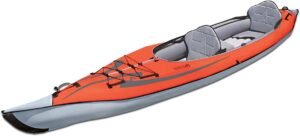
Technical Specs
- Construction: Three-layer PVC with aluminum frame
- Hull Dimensions: 15 x 2.7 feet
- Hull Weight: 52 pounds
- Weight Capacity: 550 pounds
So calling it a day, let me start with a cross between two types of ‘yaks with some flexibility and adjustable features borrowed from two different categories of inflatable and folding kayaks.
Now this Advanced Elements I’m talking about: it is a folding, inflatable, two-seated, and transformable.
Yep, that is correct; this ‘yak has it all – or at the very least it has anything and everything you would need, and then probably a bit more as it is arguably the most ‘all-round’ kayak out there at present. Think about it:
It can be changed to a tandem with a one-person ‘yak and from an open-deck kind of kayak to a sit-in type.
That, however, is where the Convertible Decks are concerned and I should mention that they are not part of the package. Therefore you will either require extra cost to acquire them—or settle for the “primary” one.
And having a built-in aluminium frame which I do like very much I can’t have any issue with it weighing what it does. I will have to admit this inflatable is one of the most robust in its class with its three-layer structure and the bow and stern ribs. Aside from offering the impression of additional robustness, the ribs also enhance the tracking characteristics which makes this one a quite satisfactory option for day touring.
2. Oru Kayak Coast XT
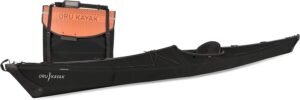
Technical Specs
- Construction: Five-millimeter double-layered polypropylene
- Hull Dimensions: 16.2 x 2.1 feet
- Hull Weight: 32 pounds
- Weight Capacity: 400 pounds
There is one thing to remember about Oru which is, that, they presently made six models of kayak and interestingly all their models are grouped by the type of environment it in and the need for which they can be used.
Hence, for instance, there’s the Inlet; easy to assemble, is well suited to flat water, and performs best in such a scenario. Next, there is the Beach LT designed for general use with a focus on easy, short trips, which is ideal for hobby fishing.
And then, you have the Coast XT, which, as the name suggests is Oru’s Marines folding kayaks – and this is no ordinary folding kayak- it is fantastic.
Some things are still the same as before, such as the cube-like design pioneered in the origami process and the 20,000 folding cycle durability. Nonetheless, for a longer and sleeker design, the Coast XT is four hundred percent longer than the Coast lights and only thirty-two millimeters in thickness. Also, its size is 2 feet in length and 25 inches in width. Mind you, that’s four feet longer than the Bay ST at 33’6 ″.
As much as I appreciate style, the Oru Kayak Coast XT also gains additional points because it is so easy to roll that you can go Class III or wave without a care in the world.
But all of that is going to cost you. That said, the Coast XT from Oru is many things; ‘cheap’ isn’t one of them While the Coast XT from Oru is many things, it is not ‘cheap’. CFL and in fact costs as much as the Haven TT, which is bizarre since the Haven is a tandem kayak. While not dubiously disputable that it is money well spent – I would not categorize it as an affordable kayak per se.
3. ADVANCED ELEMENTS AdvancedFrame Sport Kayak
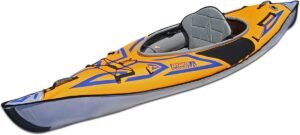
Technical Specs
- Construction: Three-layer PVC with aluminum frame
- Hull Dimensions: 10.4 x 2.7 feet
- Hull Weight: 26 pounds
- Weight Capacity: 250 pounds
In the same vein, every time we talk about Advanced Elements’ AdvancedFrame ‘yaks, that which specifically sets the inflatable/folding kayaks apart from their counterparts in the market is the fact that the body is aluminum reinforced.
And this so-called Sport model is no different:
The three-layer PVC hull, 1000 D polyester reinforcements, and built-in aluminum ribs, that form the bow and stern, form part of the basics which go to make up a surprisingly robust 10. A very lightweight and decent 4-foot kayak that is easy to carry and only weighs 26 pounds.
Indeed, it is a relatively lightweight kayak akin to the large AdvancedFrame kayaks of Baja.
The Sport also features – if one may be permitted a Play on Words – a larger, easier-to-access cockpit opening and an integrated seat with a variable backrest which is a bonus.
Of course, this is a recreational kayak here so there are certain things that they are lacking. That’s why it has a modest weight capacity of only 250 pounds and not a lot else going on; it does have a few D-ring tie-downs and some bungee deck rigging at its forward end, at least. The tailgate does open but there is very little space back there; I would not consider it a true storage space.
Still, again, this is not the type of kayak that you could go in for a tour and the usual weekend or afternoon paddling, you won’t even require more than that. They offer more space and a higher weight capacity, if this is what you need, or you simply prefer Advanced Elements Convertible more.
4. Oru Kayak Haven TT
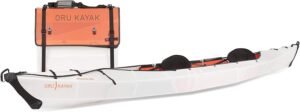
Technical Specs
- Construction: Five-millimeter, double-layered polypropylene
- Hull Dimensions: 16 x 2.7 feet
- Hull Weight: 41 pounds
- Weight Capacity: 500 pounds
As I promised, this round-up would have more than a few Oru kayaks in it, right? Well, the next one is not highly unknown, so let me mention the Haven TT, the folding kayak for two.
The hull is a single piece and the shell is made of five-millimeter, extruded polypropylene with an outer layer of colored polypropylene, while the inner layer is of clear polypropylene; the hull is pre-shaped with fold lines that transform the suitcase shape into the kayak using neoprene end caps, buckles, and nylon straps.
And same as its kind, the Inlet and the Coast XT, it comes with a raving feature of a 20,000-fold cycle rating. Also, Oru has spare parts in its inventory – floors, bow and stern bulkheads, as well as tension straps. You may rebuild it – and your ‘yak will be back as good as new even if some component of the system fails.
When assembled, the Haven TT has dimensions of 16 feet long by 33 inches wide and has a recommended maximum weight of 500 pounds. Simultaneously, Oru’s tandem kayak has an agreeable weight of forty-one pounds, which is quite pleasing given the vessel’s ability to accommodate two people.
The coolest part? As is the case with the AdvancedFrame Convertible or the Duracraft Mach 3, the Haven TT also has provisions for toggle and can be converted to accommodate a single paddler, or at least, as needed.
While not as specific to surfing as the Oru Coast XT, the Haven TT seemed slightly less advanced, and appeared to be built more with novice users in mind – it also seemed a little more New World-appropriate than the sea-going Oru Coast XT.
5. TRAK Kayaks 2.0 – Portable Performance Kayak

Technical Specs
- Construction: Polyurethane fabric with aluminum frame
- Hull Dimensions: 16 x 1.9 feet
- Hull Weight: 48 pounds
- Weight Capacity: 300 pounds
Alright then, wiping off my open mouth so I won’t be seen as completely biased, I have to admit this, here we go. A kayak like TRAK 2. Many of the PWCs that come with 0 as their starting number aren’t going to be cheap for the people looking forward for a budget kayak. This thing is as-custom-built-as-it-gets – and if the idea of shelling out about $3850 for a ‘yak doesn’t appeal to you, you may want to look away right about now.
Are you still interested?
If that is the case then let me present this durable sea-worthy 16’ flat-bottomed boat for those longer-distance cruisers.
This angler kayak assembles the sit-inside concept with the help of formidably military-grade polyurethane fabric combined with a Hi-Tech aerospace aluminum frame that makes it nearly impossible to break. As it has been pointed out that TRAK 2 is quite rigid in its structure, this factor is quite relevant to the analysis of the case. That makes 0 – yeah, insane. Nevertheless, it only comes with a weight of 48 pounds.
I spent almost an hour putting it together the first time I used it, but it should take 20 minutes on average. This bad boy is also overweight for a folding kayak to begin with and its weight does not even help to get the process over with any quicker.
Compared to Oru’s Haven TT, the TRAK is only a few pounds heavier, but the load capacity is a different story:
The particular Oru is capable of holding a load of 500 pounds, whilst the TRAK is ideal for 300 pounds; and this is for two similarly sized 16-foot kayaks.
6. Oru Kayak Bay ST

Technical Specs
- Construction: Five-millimeter, double-layered polypropylene
- Hull Dimensions: 12.2 x 2.1 feet
- Hull Weight: 26 pounds
- Weight Capacity: 300 pounds
I see that you are getting a feel of which company is most prominent in the folding kayaks segment of the market, are you not?
The Bay ST is, indeed, at the core of Oru’s models of folding kayaks that replicate the art of folded paper – or origami-inspired design. So if you are looking for a product that can perform its job, then this one is way better than the rest.
So given the further understanding of Oru’s folding kayaks, you should be aware that the 5mm double polypropylene and a folding range of 20,000 fold is standard. But What draws a line between these websites and makes it stand out from the others.?
Well, let me tell you that the Oru Bay ST is a 12-foot kayak, which can be categorized as an intermediate-level kayak because it has features that allow it to perform well in both flat water bays and other small water bodies.
It is one of the lightest weighing only 26 pounds just like the other laptops with dedicated graphics on the list. Besides, transporting the Bay ST kayak is a problem that you can easily solve because it will not take up much space in the car. It can be carried as a companion on a hiking, or taken for a plane travel. The experiences are only limited by the lack of limitation in the skies.
As for the second question I found that if you place the Bay ST and the TRAK 2 side by side, the areas shaded in blue would differ as shown in the following images: 0 side by side, and one of the most imposing differences is the size of the carburettor, the weight of the vehicle, and; naturally, the price. The TRAK 2. Curiously, 0 is nearly two times heavier than Oru’s Bay ST – all while possessing a staggering two times higher price tag.
The 25-inch beam may initially give newcomers the impression that the Bay ST will feel a tad unstable, at least unless they get accustomed to the design. Although it might sound a little tough and stiff, I am sure that, if you already have a few outings under your belt, you should be able to make friends with this great boat.
7. Tucktec Folding Kayak – Advanced 10-Foot
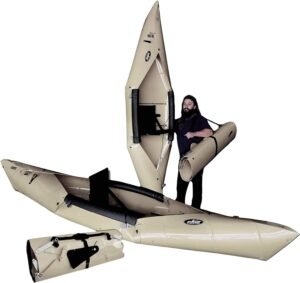
Technical Specs
- Construction: ⅛-inch high-density polyethylene thermoplastic
- Hull Dimensions: 10 x 2.5 feet
- Hull Weight: 30 pounds
- Weight Capacity: 350 pounds
Although Oru crafts some fantastic folding kayaks, there is one That is not very great about them, and that is the price. So, if you’re set on getting an origami-style folding kayak but don’t quite have the budget for it, the Tucktec Advanced could be the answer:
It’s dirt cheap compared to a similarly-sized Oru kayak – so the question is:
Does this cheapness translate to its construction and functionality or is it just a very elaborate name for a barely affordable product?
The Tucktec Advanced is constructed using high-density polyethylene and is only ⅛ of an inch in thickness; however, the fully assembled kayak only weighs 30 pounds, which is very lightweight for a 10-foot kayak. Unfortunately, I don’t have much information in terms of its durability; this is so because the company has not provided for fold cycle limit.
The only thing I know about it is that it is said it was created for folding “thousands of times”.
You can’t buy spare parts, either – surely, taking into consideration that the cost is $150 for an Oru kayak, the company doesn’t leave much to be desired.
Its design is wide and the hull is flat and this makes it stable this makes it suitable especially for new learners and especially for those intending to practice kayak fishing. You would think that such a kayak would not even steer properly, but, much to my surprise, Tucktec tracks even better than some of the Oru folding kayaks I tried – most likely, thanks to the fin that is hidden inside the hull.
Unfortunately, it can only do a trolling motor and can only take a very gentle rocking motion – and if you flip over, you have almost no chance of self-righting.
8. Oru Kayak Beach LT
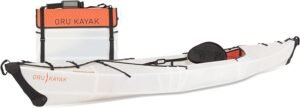
Technical Specs
- Construction: Five-millimeter, double-layered polypropylene
- Hull Dimensions: 12.1 x 2.4 feet
- Weight: 25 pounds
- Weight Capacity: 300 pounds
Of course, another kayak from Oru Kayak makes some great products that are worth recommending. What can I say – the folks at Oru know how to build a machine that can fold itself and remain pristine after traversing through the sea? On that note, I thought it only seemed fitting to end this round-up with the Beach LT, which is currently Oru’s most well-known design.
And when you see the price-to-value ratio, it becomes apparent where the Beach LT’s popularity comes from:And when you see the price-to-value ratio, it becomes apparent where the Beach LT’s popularity comes from:
This canoe recreational kayak is 12 feet long and is as simple as it gets for anyone looking into casual friendly kayaking. It retains the same five-millimetre double-sided layer made of polypropylene that proved to be of great quality – and it only weighs 25 pounds!
Let’s talk a bit more about this kayak’s portability:
Yes, it is lightweight, but that is not the only feature to consider when selecting one. It also collapses nicely, it can fold to be as compact as a mid-size suitcase in the blink of an eye, majestically in the space of two minutes!
In terms of how it performs in strong winds and irregular waves, I would like to note that the Gulp! is on the upside compared to the Bay ST. It is more of a lightweight kayak, and therefore does not operate at par with many of the bulkier and muscular models out there – but it sure goes for a fair competition.
I wouldn’t risk fighting in the challenging terrains, however, The God of War might be albeit a video game character. It is suitable for light wind – which means it’s not designed for experiencing strong winds and heavy sea.
9. Tucktec
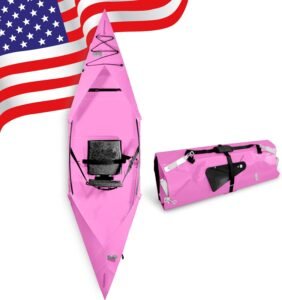
Technical Specs
- Material: High-Density Polyethylene
- Length: 10’
- Folded Dimensions: 48” x 31” x 15”
- Capacity: 300 lbs (136 kg)
- Weight: 28 lbs (12.7 kg)
Tucktec folding kayaks has a roll design which makes this folding kayaks very fold and compact when it is stored. This folding kayak is not as durable nor as cheap compared to some of the folding kayaks provided under this list.
As a performer, it is not very impressive but it will do nicely if you intend to romp around on flat water and in extreme cases, even fish kayaking in calm stream rivers.
Tucktec built its alternative from a combination of hard plastic and has a wide design that aids in maintaining balance when afloat. In conclusion, Tucktec……It is a perfect choice if you need a recreational and beginner-friendly folding kayaks.
Easy: It takes a while to get established and given that you discover how the system works you can set it up within 3 minutes. Perhaps, that makes it a possible contender for the World’s fastest folding kayaks although it still has one serious flaw; it does not track well.
As a final note about the Tucktec folding kayak, it is crucial to understand that this paddle craft is not perfect for rough and complex water conditions and is therefore best suited for flat water.
10. Mark I Long Haul
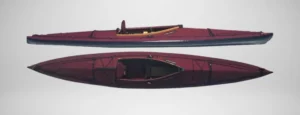
Technical Specs
- Material: Ash and birch wooden frames, CSM rubber hull, and vinyl-coated acrylic deck fabric
- Length: 16’
- Folded Dimensions: 29″ x 19″ x 5″
- Capacity: 600 lbs (272 kg)
- Weight: 69 lbs (31 kg)
For instance, if you are an experienced and advanced kayak user who may wish to cover very many kilometers or even desire to go on an expedition, then the Ultimate Packs Long Haul series of folding kayaks will be ideal for you. The Mark I is a variant of a skin-on-frame system, though somewhat more complex for touring or expedition use.
This is one of the heaviest folding kayaks currently for sale, which means we are obtaining a more rigid craft at the expense of portability. However, the Mark I Long Haul provides paddlers comfort, stability, and reliability that ensure that they paddle through uncomfortable and harsh conditions.
These are additional features such as an 8” keel strip and 8 located D-rings on the deck and grab handles in front and rear of the kayak. An essential accessory of every Mark I is a soft-padded seat and carrying case, a packing cover, and a carrying bag.
Conclusion – The Winner Of Best Folding Kayaks Is?
You’ve made it to the end, which can only mean one thing:
The fact is you really might be thinking of purchasing a collapsible kayak. The final decision to be made is – which version requires your attention.
Now, you already know that the Oru Kayak Coast XT is my personal favourite It thus deserves our full review in this article. Well, I think by now I made it abundantly clear on that front anyway, didn’t I
On the water, the Coast XT is truly a high-performance kayak that is right at home in waves and class III rapids, besides being capable of carrying some load- and all this comes in under 32 pounds.
While I have identified it as a good fold-up kayak for various activities, it is not the only one worth checking out. Third, there are other brilliant models – the ones which cost a lower price than my top ones, and those which are way more costly.
For instance, I would willingly vouch for the Tucktec Advanced as a budget option – because, in all honesty, you will not come across a more uniquely optimized folding kayak at that price range.
It just boils down to the fact that you need to set your priorities and the necessary features you need in order and look for a kayak that suits those criteria perfectly.

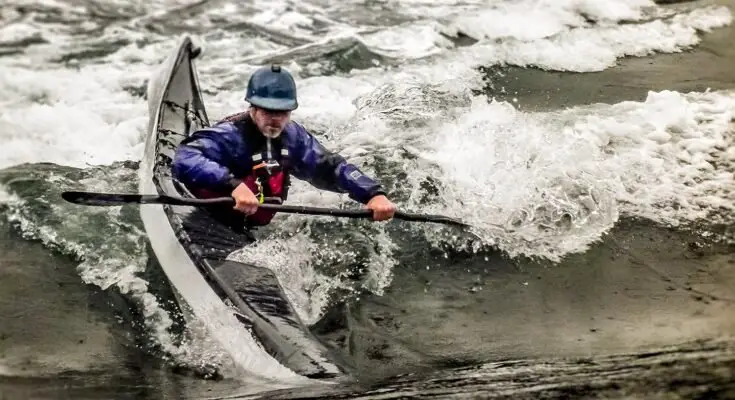
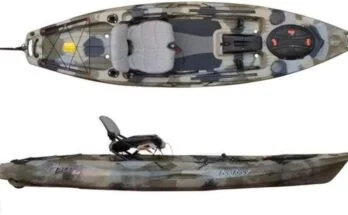
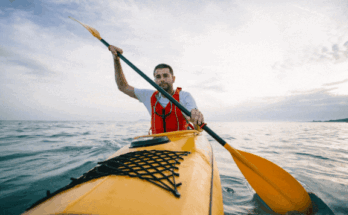
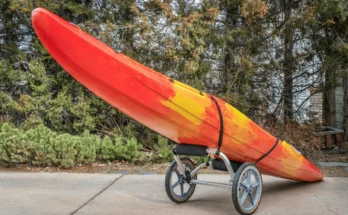
I found this post incredibly helpful. The step-by-step approach you’ve taken is very useful, and I’ve learned a lot that I can apply to my own projects.